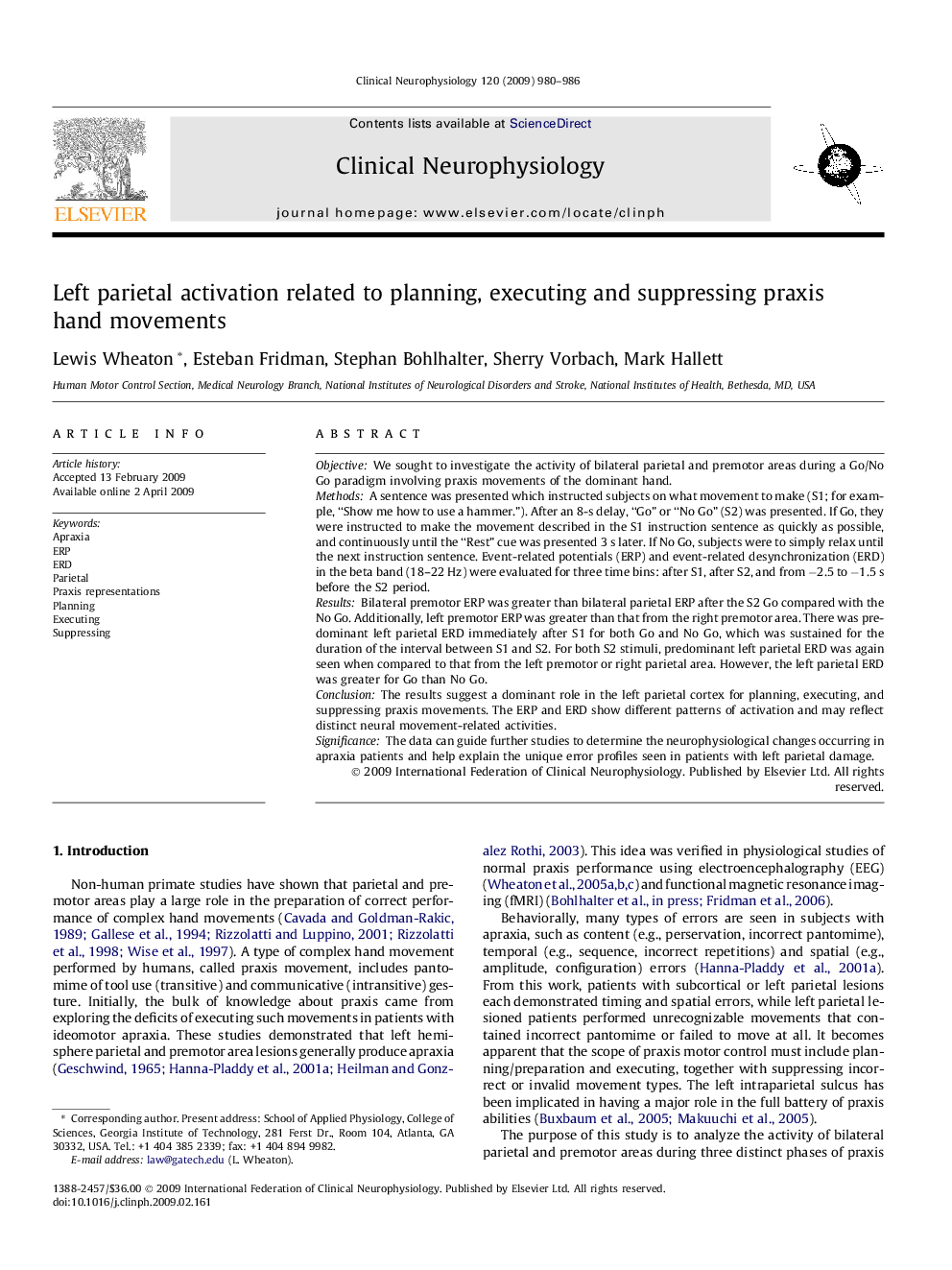| Article ID | Journal | Published Year | Pages | File Type |
|---|---|---|---|---|
| 3046057 | Clinical Neurophysiology | 2009 | 7 Pages |
ObjectiveWe sought to investigate the activity of bilateral parietal and premotor areas during a Go/No Go paradigm involving praxis movements of the dominant hand.MethodsA sentence was presented which instructed subjects on what movement to make (S1; for example, “Show me how to use a hammer.”). After an 8-s delay, “Go” or “No Go” (S2) was presented. If Go, they were instructed to make the movement described in the S1 instruction sentence as quickly as possible, and continuously until the “Rest” cue was presented 3 s later. If No Go, subjects were to simply relax until the next instruction sentence. Event-related potentials (ERP) and event-related desynchronization (ERD) in the beta band (18–22 Hz) were evaluated for three time bins: after S1, after S2, and from −2.5 to −1.5 s before the S2 period.ResultsBilateral premotor ERP was greater than bilateral parietal ERP after the S2 Go compared with the No Go. Additionally, left premotor ERP was greater than that from the right premotor area. There was predominant left parietal ERD immediately after S1 for both Go and No Go, which was sustained for the duration of the interval between S1 and S2. For both S2 stimuli, predominant left parietal ERD was again seen when compared to that from the left premotor or right parietal area. However, the left parietal ERD was greater for Go than No Go.ConclusionThe results suggest a dominant role in the left parietal cortex for planning, executing, and suppressing praxis movements. The ERP and ERD show different patterns of activation and may reflect distinct neural movement-related activities.SignificanceThe data can guide further studies to determine the neurophysiological changes occurring in apraxia patients and help explain the unique error profiles seen in patients with left parietal damage.
